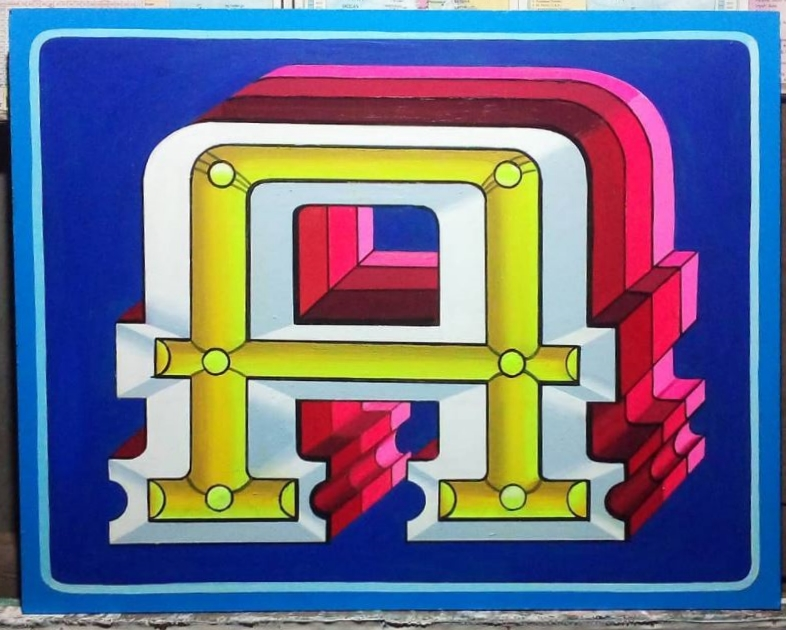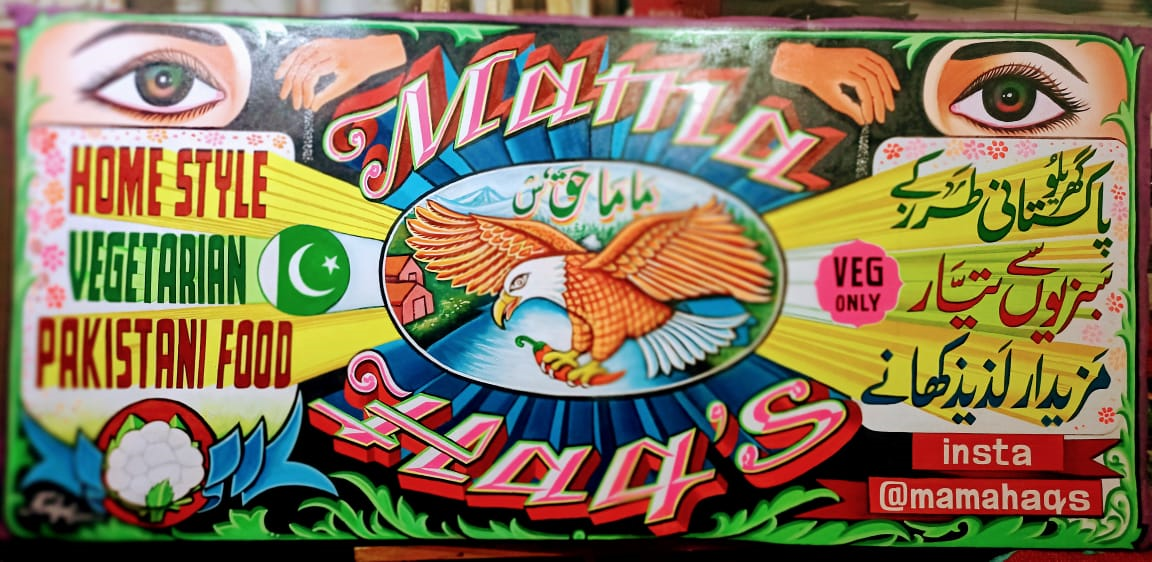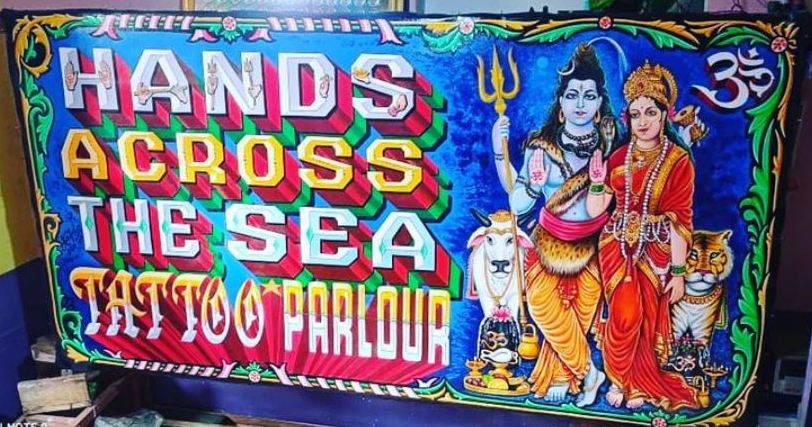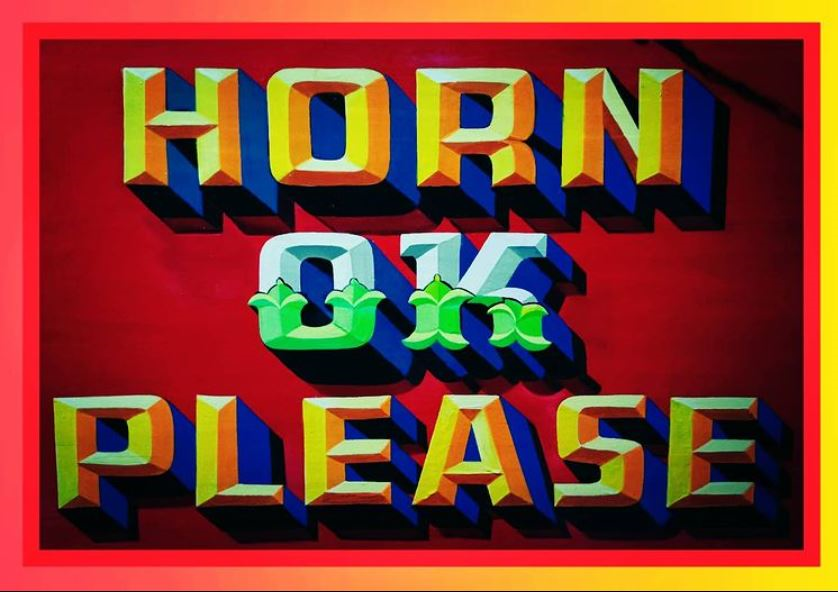Painter Kafeel: Keeping it Hand-Painted in India
Delhi sign painter Kafeel rejected vinyl, kept it hand-painted, and now has a new global clientele.

Painter Kafeel is an Indian sign painter in Delhi, and I first became aware of his work via the HandPaintingType initiative from Hanif Kureshi. In 2018 I invited them both to the London Letterheads event, where Kafeel wowed the 250 attendees with his outrageous skills—this culminated in one of his panels fetching the highest price in the charity auction. I invited Nisha K. Sethi to tell Kafeel’s story, based on a video interview by Hanif.
Opening of Painter Kafeel's interview with Hanif Kureshi. In the background is work-in-progress on a commission for Switzerland's Serge Lowrider.
Painter Kafeel: Keeping it Hand-Painted in India
By Nisha K. Sethi
Artistry and craftsmanship can be seen beaming beneath layers of dust, interwoven throughout the villages and urban landscapes of south Asia. The streets of India serve as endless sprawling canvases where hand-painted signs and cinema posters glimmer with vivid pops of colour and shadow that dot the alleys of every neighbourhood. Letterforms dip and arch their way across local shop facades with unimaginable detail and flair. One author of these hand-painted signs is an artist by the name of Painter Kafeel.
An Indian Sign Painter
Kafeel is a local ‘sign walla’ (one who paints signs) who has dedicated his life to mastering his craft. Working out of his humble Delhi studio, Kafeel has transcended the art of sign painting, using his brush to make letters dance.




Work by painter Kafeel for clients including Mama Haq's in the Netherlands and Hands Across the Sea Tattoo Parlour in Italy.
Kafeel’s distinct painting style truly stands apart with its use of intricate shadows, blends, bevels, and ornamental lettering . It has taken years, and a steady hand, to develop this characteristic technique. However, despite being regarded as one Delhi’s top sign painters, Kafeel experienced an existential crisis when vinyl (flex) signs came onto market. This new technology threatened the future of all ‘analog’ sign painters, and Kafeel felt it inevitable that he too would have to put down his brushes to avoid becoming obsolete.
Despite these technological developments, and the resulting market pressures, Kafeel was determined and worked to preserve his beloved artform. Now, he is one of the last of his trade; highly sought after and well respected. Kafeel is not not just keeping the art of Indian sign painting alive, but pushing its boundaries and developing lettering styles that have become globally iconic.